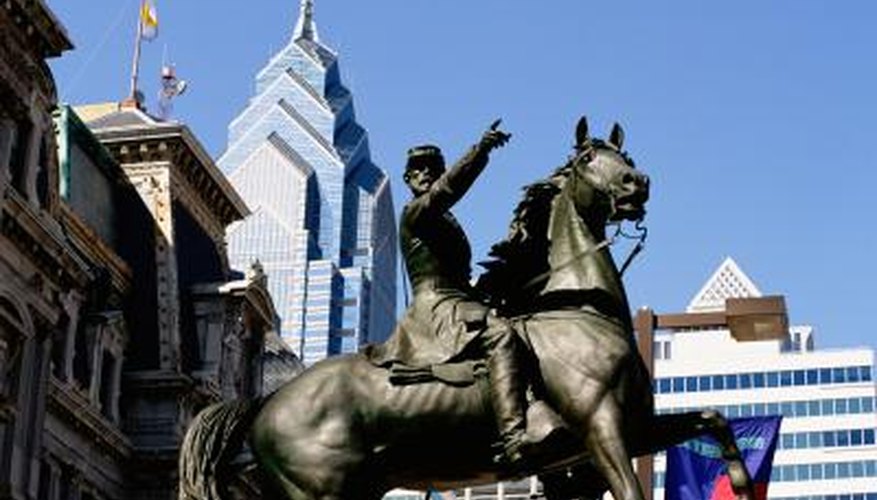McClellan saddles are steeped in history, having first been used by the U.S. Army horse cavalry in 1859. In order to make your own saddle, you will need to purchase a McClellan saddle pattern that fits your specifications and those of your horse. Although most McClellan saddles are standard, there are some variations depending on size and added features. Depending on the accessories you may want to add to your saddle, such as a horse feeding cup or rifle holder, you may want to purchase additional leather so that you can add these items to the McClellan saddle that you make. McClellan saddles are used today mostly by Civil War and history re-enactors.
- McClellan saddles are steeped in history, having first been used by the U.S. Army horse cavalry in 1859.
- Depending on the accessories you may want to add to your saddle, such as a horse feeding cup or rifle holder, you may want to purchase additional leather so that you can add these items to the McClellan saddle that you make.
Cut out the pattern for the rawhide pieces that cover the saddle tree from the rawhide. Wet the rawhide slightly, if need be, for cutting. Leave room for punching holes and hand stitching around edges.
Glue the rawhide securely to the metal McClellan saddle tree. Cover the McClellan saddle tree with rawhide, placing each piece around the saddle tree as needed. Leave room for the ends of the rawhide to be stitched together. Let the rawhide dry overnight.
With the leather punch, punch evenly spaced holes around the rawhide edges for stitching. Stitch the end pieces together all of the way around the saddle using leather lace and a leather needle.
- Glue the rawhide securely to the metal McClellan saddle tree.
- With the leather punch, punch evenly spaced holes around the rawhide edges for stitching.
Make the seat and cantle covering out of cow leather and wool shearling by cutting the cow leather and shearling to fit the seat and cantle covering pattern. Stitch and glue the cow leather for the seat. Glue the wool shearling cantle covering to the cow leather seat.
Draw pattern marks on the wool shearling and cow leather seat cover showing where they will be stitched and attached to the metal saddle tree. Using the Exacto knife, cut along the pattern marks on the cantle and seat covers. Adhere the seat cover and shearling to the bottom of the saddle tree that has been covered in rawhide. Use glue to attach them. Let dry, and finish attaching the pieces by using leather lace to stitch them onto the saddle tree.
- Draw pattern marks on the wool shearling and cow leather seat cover showing where they will be stitched and attached to the metal saddle tree.
- Adhere the seat cover and shearling to the bottom of the saddle tree that has been covered in rawhide.
Cut the leather skirt pattern out of the cow leather. Cut holes into the leather skirt, and attach it to the seat cover, fitting it around the cantle. Glue and let dry. Punch holes into the leather skirt and hand stitch to attach it to the saddle.
Cut out leather accessories and stitch together, if desired. Punch holes and add brass rings to attach to the main saddle body. Oil the saddle.
TIP
For comfort, you may want to add a foam layer between the rawhide and metal saddle tree. Most authentic McClellan saddles were not designed for comfort, however. If you have difficulty finding the correct McClellan saddle tree and metal components needed to make a McClellan saddle, consider having one custom-made for you, or consider refurbishing a vintage, authentic McClellan saddle. Attend a saddlemaking class if need be. Search online for books and for different authentic McClellan saddle pattern specifications and design options.
WARNING
Be conservative when adding on or designing extra braiding, ropes, and accessories to the McClellan saddle. Keep in mind that the original McClellan saddles were designed for basic functionality without many fancy extras.
